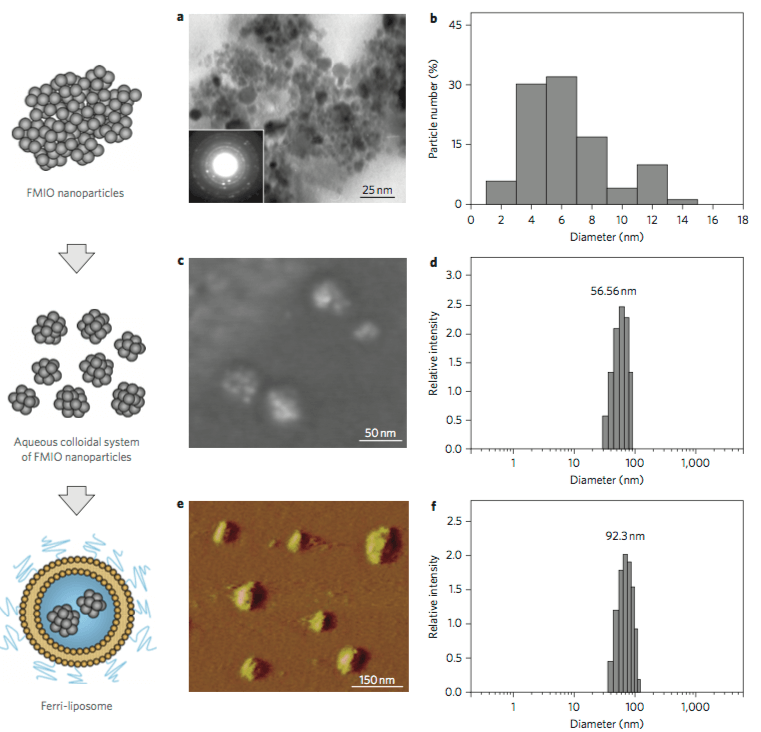Liposome Size Analysis
Together with our leading Mempro™ Liposome technology and rich experience of numerous successful cases, Creative Biostructure guarantees our worldwide clients the best products and unparalleled services for liposome research & development. Liposome size is an important parameter in liposome preparation, defining its physical property and drug delivery efficacy. In this regard, we have developed a series of methods to accurately measure the size of different liposomes.
Why size analysis is important to liposome?
The size of liposomes is an important parameter that affects the amount of drug loading, which pivotally determines the pharmacokinetic and pharmacodynamic of the drugs in circulation. In addition to their behavior in vivo, particle size also determines the solution stability of liposomes. It should also be noted that it is just as important to measure the size distribution of liposomes as it is to know their average size since liposomes are macromolecules that may differ significantly in size even when produced using a unanimous method.
 Figure 1. Schematic representations are on the left while the experimental data is on the right, correspondingly. Transmission electron micrographs (TEM) of FMIO nanoparticles (a); Size distribution of FMIO nanoparticles with an average size equal to 6.65 nm (b); Field-emission gun scanning electron microscopy of the aqueous colloidal system of FMIO nanoparticles (c); DLS measurement of FMIO colloidal dispersion (d); AFM image of ferri-liposome (e); Liposome size determined by DLS with an average size equal to 92.3 nm (f) (G. Mikhaylov, et al., 2011)
Figure 1. Schematic representations are on the left while the experimental data is on the right, correspondingly. Transmission electron micrographs (TEM) of FMIO nanoparticles (a); Size distribution of FMIO nanoparticles with an average size equal to 6.65 nm (b); Field-emission gun scanning electron microscopy of the aqueous colloidal system of FMIO nanoparticles (c); DLS measurement of FMIO colloidal dispersion (d); AFM image of ferri-liposome (e); Liposome size determined by DLS with an average size equal to 92.3 nm (f) (G. Mikhaylov, et al., 2011)
Liposome lipid content analysis methods
Dynamic light scattering (DLS)
DLS, also known as photon correlation spectroscopy, is a technique based on the principle of time-depended intensity fluctuations in scattered laser light resulted from Brownian motion of particles in suspension. Since small particles diffuse more rapidly than large particles, the rate of fluctuation of scatted light intensity changes accordingly, which is measured and used to calculated particle size. DLS method is relatively easy and fast though it is not able to provide information about particle shape.
Field-flow fractionation (FFF)
FFF utilizes a channel wall composed of a semi-permeable membrane filter with a suitable molecular weight cut-off (MWCO) to determine the size distribution of liposomes. Small liposomes elute faster than large ones since they have higher diffusion coefficients in FFF. Measuring size distribution by flow FFF offers a number of advantages such as convenience, efficacy, non-invasiveness, free of calibration, and broad separation range. The major drawback of this method is the relatively high cost.
Electron microscopy (EM)
Electron microscopy is widely used in size analysis of liposomes, providing valuable information of liposome morphology and architecture. By using molybate or phosphotungstate as the stain, negative staining electron microscopy enables accurate determination of liposome size and gives useful images of individual vesicle to measure the number of lipid bilayers. Freeze fracture electron microscopy is used as a powerful tool to observe morphological structure of the liposome. The major disadvantages of EM-based techniques include long processing time and high cost.
HPLC-SEC (Size-exclusion chromatography)
HPLC-SEC is strongly improved from conventional SEC by using a HPLC system associated to gel columns with a size selectivity range allowing liposome characterization in addition to particle fractionation. HP-SEC permits physically separation of liposomes into a series of subpopulations with destruction, which can be assayed by various complementary analysis such as liposome size distribution analysis, size stability study, liposome fusion and aggregation analysis.
The size distribution of liposome is one of the most important properties in liposome analysis and characterization, provides key information for various downstream applications. Creative Biostructure is dedicated to offer our advanced Mempro™ Liposome Technology to clients all over the world. Please contact us to share more about your research and get a detailed quote.
Ordering Process
References
- R. Garcia-Diez, et al. (2016). Size determination of a liposomal drug by small-angle X-ray scattering using continuous contrast variation. Langmuir, 32: 772-778.
- D. Mastrogiacomo, et al. (2015). Lipid/detergent mixed micelles as a tool for transferring antioxidant power from hydrophobic natural extracts into bio-deliverable liposome carriers: the case of lycopene rich oleoresins. RSC Advances, 5: 3081–3093.
- G. Mikhaylov, et al. (2011). Ferri-liposomes as an MRI-visible drug-delivery system for targeting tumours and their microenvironment. Nature Nanotechnology, 6(9): 592-604.
